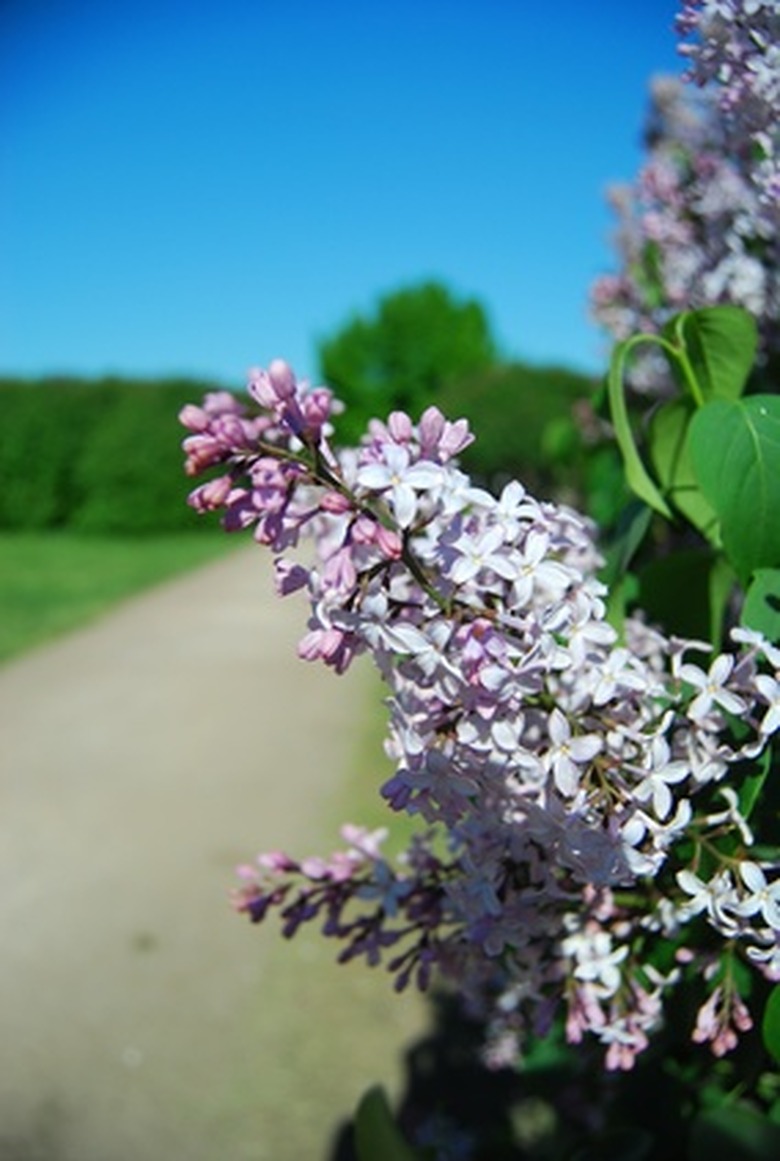Green Fungus On Lilac Bark
Lilacs are small shrubs or trees, ranging in size from around 6 to 32 feet in height and are best known for their fragrant flower clusters. They bloom in mid-spring through early summer and are often lilac colored, but can be white, pale pink, yellow or even dark burgundy. They are affected by a variety of pests and organisms such as green lichen, which often is mistaken for a type of fungus on the tree.
Lichen
Lichens are symbiotic organisms of fungus and green or blue-green algae that grow together on trees and other plants. The fungus is able to provide water and nutrients from the air and tree, while the algae are able to provide carbohydrates and photosynthetic foods. They naturally grow on rocks, bark and soil and are harmless to trees and the environment.
Nitrogen
Lichens are natural nitrogen-fixers, capturing nitrogen from the air and adding it to the soil when they begin to decompose, where other plants are able to absorb it. Although both the fungus and alga of lichen are able to live and reproduce separately, this unique ability is only possible when the symbiotic relationship occurs.
- Lilacs are small shrubs or trees, ranging in size from around 6 to 32 feet in height and are best known for their fragrant flower clusters.
- They are affected by a variety of pests and organisms such as green lichen, which often is mistaken for a type of fungus on the tree.
Pollution
Lichens are very sensitive to air pollution and will typically not grow in smokey or polluted environments. Scientists now use lichens as a way to test the air quality of specific locations. The University of Illinois states that air pollution made it impossible for lichens to grow in Illinois during the 1970s, but that has begun to change in 2000. Lichens are since very common to Illinois and the Midwestern region of the United States.
Lichen on Bark
As a tree grows in size, lichen are unable to attach themselves to the extending bark. Small patches may develop, consisting of only a few inches. If larger lichens attach themselves to the lilac tree, there is possibly a deeper problem with the tree's health. A variety of diseases, nutrient deficiencies and pests can reduce a lilac tree's ability to grow by sapping important resources from the organism.
- Lichens are very sensitive to air pollution and will typically not grow in smokey or polluted environments.
- If larger lichens attach themselves to the lilac tree, there is possibly a deeper problem with the tree's health.
Lilac Growth
Lilacs that are cured of illness or disease are sometimes able to grow again in time. They need full sun and well-drained soil to properly flower and reproduce. Removing one-third of the oldest stems at ground level ever year for three full years can encourage new growth from the base and help destroy dead, damaged or diseased branches. Lichen should never be removed by hand due to the environmental benefits they provide. Instead, let the organism naturally fall away when the tree starts to develop again; this will provide the soil with added nitrogen and will keep the gardener informed of the tree's respective health.
References
- University of Illinois: Extension: Lichens on Tree Bark
- "Lilacs: A Gardener's Encyclopedia"; John L. Fiala; 2008
